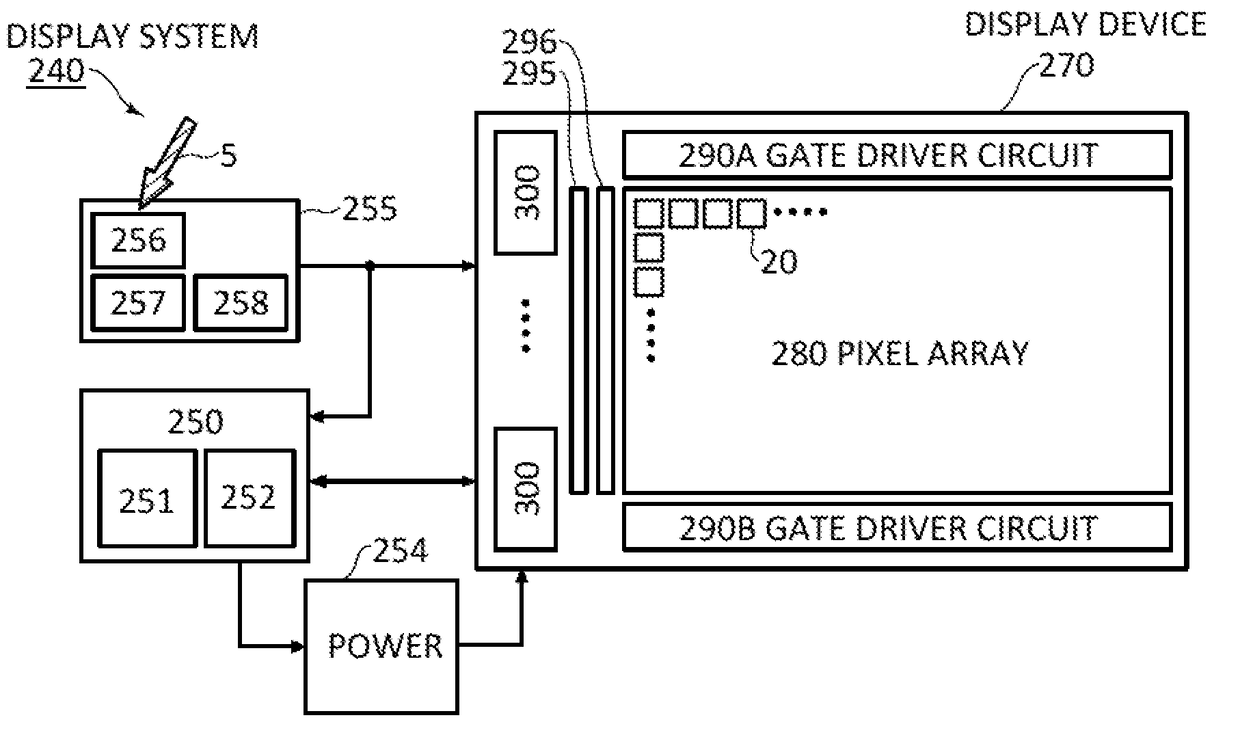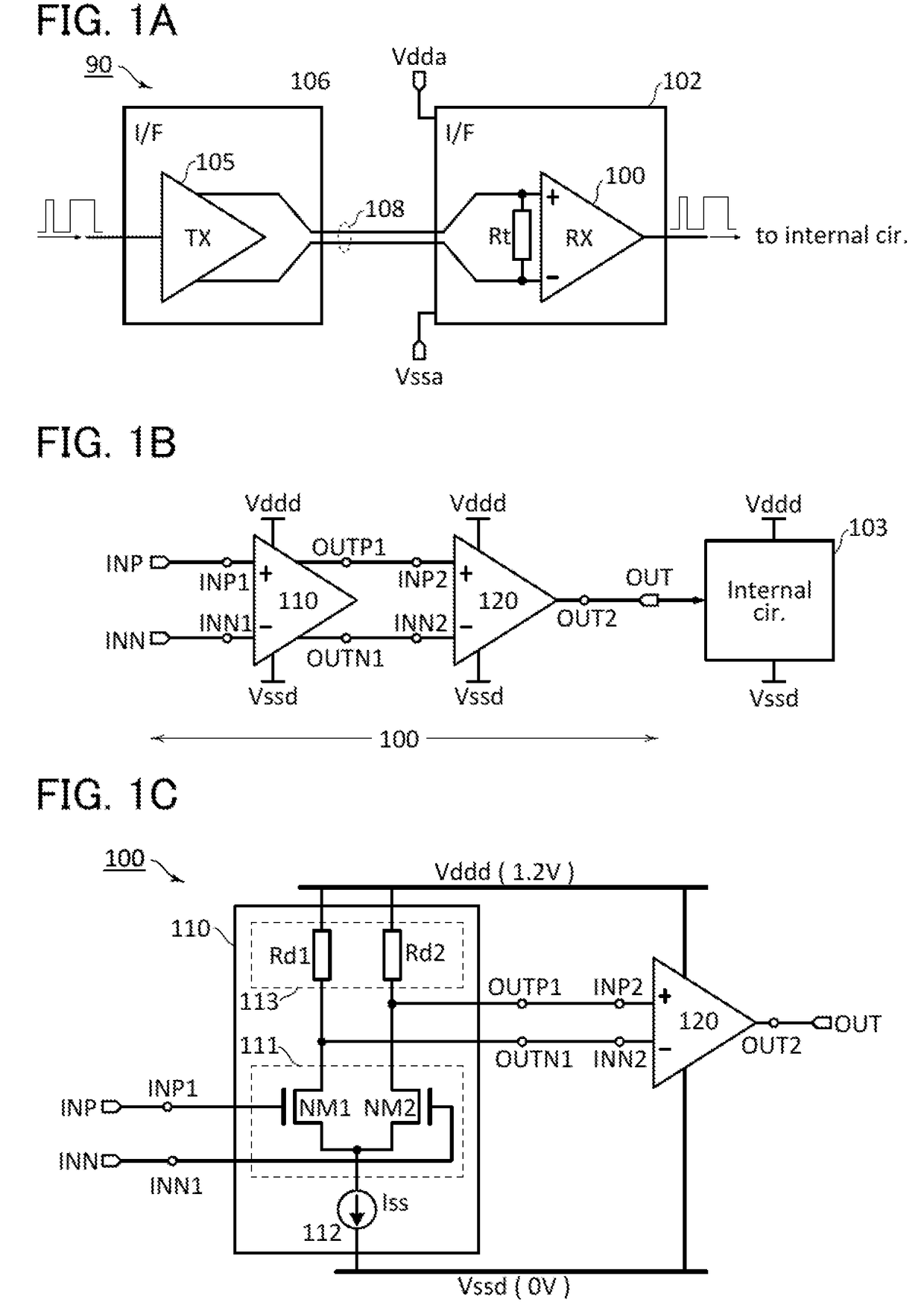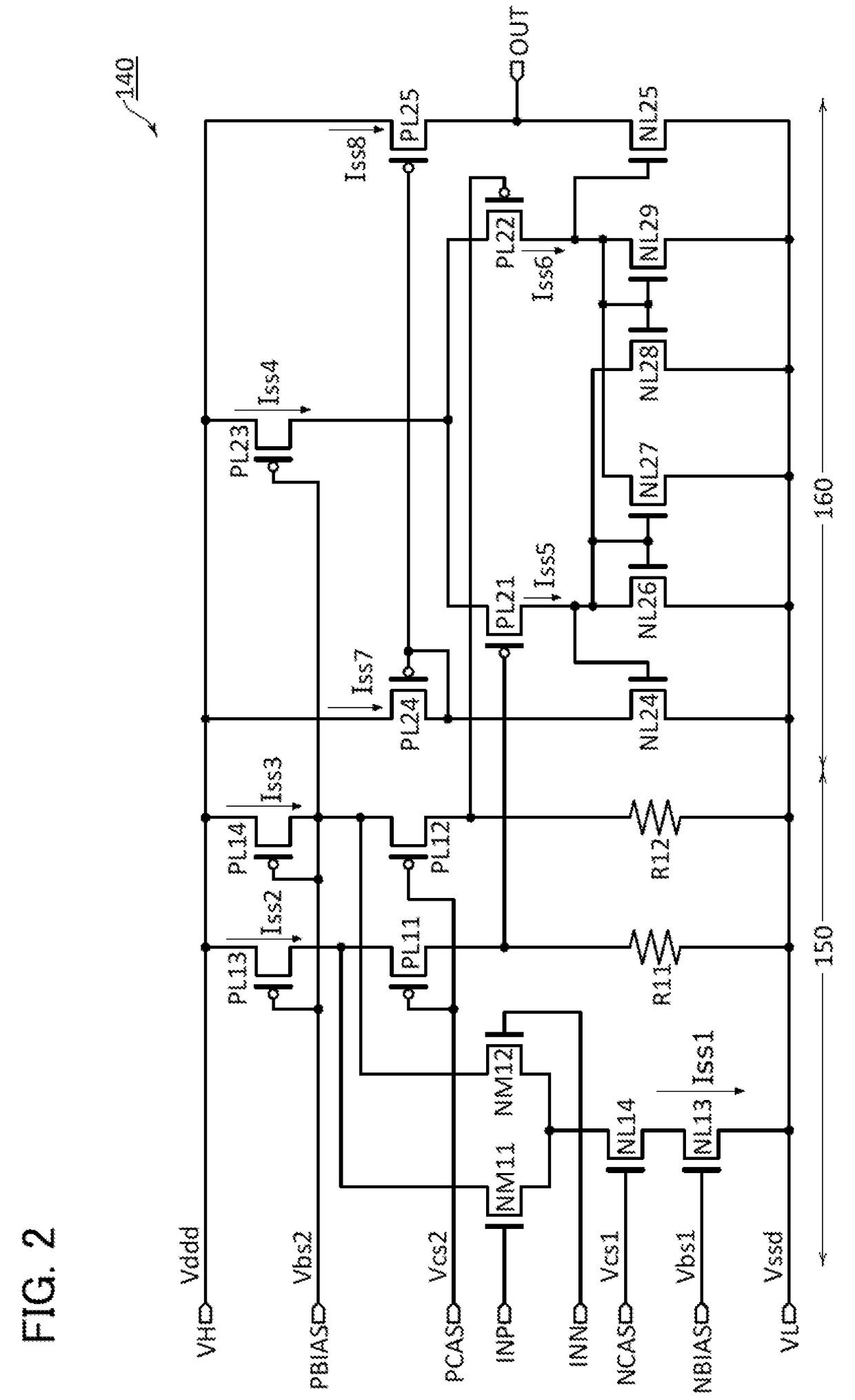Receiver for receiving differential signal, IC including receiver, and display device
a technology for receiving differential signals and display devices, which is applied in the direction of static indicating devices, amplifier combinations, instruments, etc., can solve the problems of reducing display quality, increasing the number of wirings, and increasing power consumption, and achieve high input/output linearity
- Summary
- Abstract
- Description
- Claims
- Application Information
AI Technical Summary
Benefits of technology
Problems solved by technology
Method used
Image
Examples
embodiment 1
[0066]FIG. 1A illustrates an overview of a system for transmitting a digital signal using a differential signal (a differential transmission system). An example in which LVDS is a differential transmission method is described here. In a differential transmission system 90 illustrated in FIG. 1A, an interface (I / F) circuit 102 at the receiving end includes a receiver (RX) 100, and an interface circuit 106 at the transmitting end includes a transmitter (TX) 105. The transmitter 105 converts a single-ended signal into a differential signal. The differential signal is transmitted to the receiver 100 via a transmission medium 108.
[0067]The transmitter 105 has a function of converting a single-ended digital signal into a differential signal. The differential signal that is output from the transmitter 105 is input to the receiver 100 via the transmission medium 108. The transmission medium 108 includes two wirings. A resistor Rt is a termination resistor at the receiving end and has a resi...
configuration example 1
[0126]FIG. 8 illustrates a configuration example of an LVDS receiver IC with four input channels. An LVDS receiver IC 200 includes receivers 2101> to 2104>, a bias voltage generation circuit 212, a reference current generation circuit 213, a logic circuit 215, and pins RINP1 to RINP4, RINN1 to RINN4, ROT1 to ROT4, VH1, VL1, and CE.
[0127]The pins RINP1 to RINP4 and RINN1 to RINN4 are input pins for differential signals. In the LVDS receiver IC 200, a resistor for terminating the pin RINP1 and the pin RINN1 is provided. The other input pins for differential signals are also terminated similarly.
[0128]The pins ROT1 to ROT4 are output pins for single-ended signals. The pins VH1 and VL1 are input pins for power supply voltages; for example, the power supply voltage Vddd is input to the pin VH1 and a ground voltage (GND) is input to the pin VL1. The pin CE is an input pin for a chip enable signal.
[0129]The logic circuit 215 generates the signals STBE and STBEB based on the chip enable sig...
configuration example 2
[0131]FIG. 9 illustrates a configuration example of an LVDS receiver IC. An LVDS receiver IC 201 has four input channels and has a function of outputting a 32 (4×8) bit parallel data signal. The LVDS receiver IC 201 has a function of a deserializer. The LVDS receiver IC 201 includes receivers 2101> to 2105>, serial-parallel (S / P) converter circuits 2201> to 2204>, a phase locked loop (PLL) circuit 221, a bias voltage generation circuit 212, a reference current generation circuit 213, a logic circuit 215, and pins RINP1 to RINP4, RINN1 to RINN4, CKINP, CKINN, ROT1_1 to ROT1_8, ROT2_1 to ROT2_8, ROTS1 to ROT3_8, ROTO1 to ROT4_8, RCKO, VH1, VL1, and CE.
[0132]The LVDS receiver IC 201 includes four data lanes and one clock lane. Differential clock signals RCLK_P and RCLK_N are input to the clock lane from the pins CKINP and CKINN. The receiver 2105> converts the differential clock signals RCLK_P and RCLK_N into a single-ended clock signal. The PLL circuit 221 generates a clock signal CLK...
PUM
 Login to View More
Login to View More Abstract
Description
Claims
Application Information
 Login to View More
Login to View More - R&D
- Intellectual Property
- Life Sciences
- Materials
- Tech Scout
- Unparalleled Data Quality
- Higher Quality Content
- 60% Fewer Hallucinations
Browse by: Latest US Patents, China's latest patents, Technical Efficacy Thesaurus, Application Domain, Technology Topic, Popular Technical Reports.
© 2025 PatSnap. All rights reserved.Legal|Privacy policy|Modern Slavery Act Transparency Statement|Sitemap|About US| Contact US: help@patsnap.com



